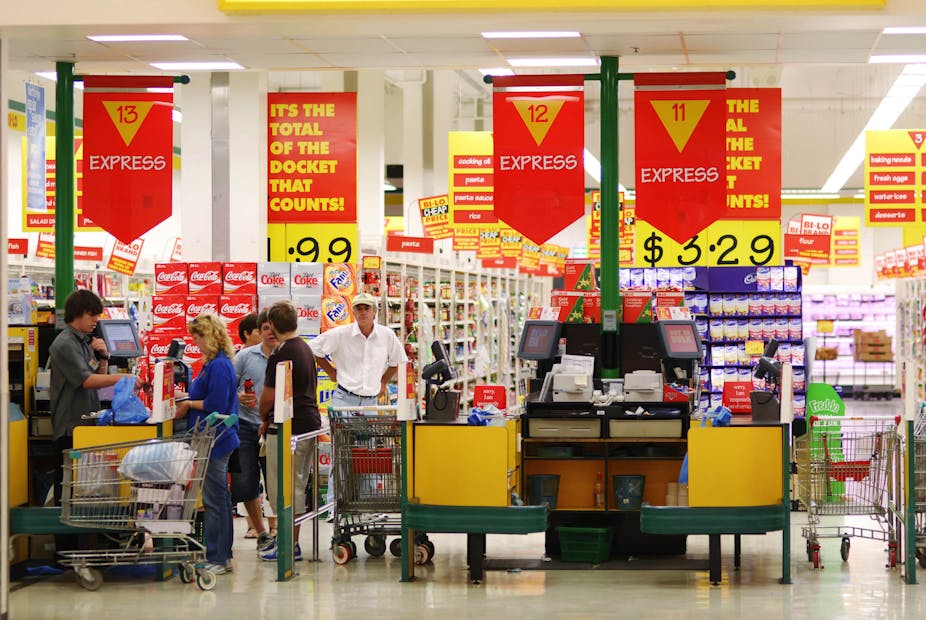Food security is on the agenda for Australia. I wrote on this recently, pointing out that while we currently grow enough to feed 60m people, we are not immune to food security pressures.
Wealthier nations are buying up Australian farmland to guarantee supply; food prices are increasingly volatile, causing panic and riots in less developed countries.
If you think the current level of arrivals in Australia by boat is a political challenge, try multiplying the number by 10 to 100. And climate change will make it worse.
The flooding in Queensland, with supermarket shelves emptying fast, was a reminder of the sensitivities and reliance of an urban population on long supply chains. We are simply not immune to food security even without considerations of climate change.
The simple solution is to grow more with less (less land, less water and less energy). We fully expect that energy costs will keep on rising in the long run, reflecting world demand.
As the recent paper on Victorian Food Strategies points out (DPI April 2011), “there are both physical and financial constraints to resource extraction, regardless of what level prices for key resources reach”.
Put simply, there are limits to paying more and more for inputs. There comes a point where the economics of what people will pay for goods doesn’t justify the higher input costs.
Growing more with less means increasing our agricultural productivity. And yet our agricultural productivity is falling.
In the last ten years agricultural productivity has flat lined and declined after years of increasing. Perhaps farm consolidation and rationalisation has largely run its course.
At the same time, we have a larger world population to feed, with little new agricultural land available. We need greater resilience to droughts and likely more variable weather. In short, it’s time to reverse the falling trend in our productivity.
Our investment in agricultural R&D and its extension to operating farms has fallen over in the last ten years. It is virtually at the same level today as it was in 1980 – a significant fall in real terms.
I contend that this is the prime reason for the decline in productivity.
The cynic might argue that it is more probable that today’s research is less well focussed or strategic. Reviews of the Rural R&D Corporations and the CSIRO as well as some of the relevant CRCs would suggest otherwise. We are simply not doing enough.
The simplistic argument that if more R&D is needed, industry (that is, farmers) should pay for it overlooks the balancing act between long term research (including monitoring) and shorter term work.
Industry will pay for the shorter term as it can financially capture enough of the benefits. Longer term work, especially break-through R&D, is far more problematic. It will always be necessary for the public purse to fund the longer term work.
So, why not a special tax to fund agricultural R&D? Not a levy on producers (they already have that), but a tax on consumers: it is they who benefit in the long run from food security.
To stir the debate, why not put GST on food and hypothecate (ie direct) the proceeds largely to agricultural R&D?
We are on our way to a carbon tax, with some of the proceeds going to help solve the challenge of anthropogenic emissions of green house gases. This hypothecation of a tax for a specific purpose is not the normal in Australia.
Our main taxes - such as income tax, company tax, GST, stamp duty, mining royalties and the like - are raised as general revenue and spent on whatever the governments of the day fancy. So, in more ways than one, the carbon tax represents a significant change.
My political sensitivities suggest selling a GST on food to Australia’s dominantly urban population is a hard call. That said, the costs of a declining agricultural base, of increasing security challenges from our neighbours and the “selling of the farm” pave the way for change.
Much of our exported food can be classified as “commodities”. From observation of the minerals industry, one notes the same rules apply as in agriculture: to be profitable, one must have cash costs no greater than at the bottom of the swings in pricing. To do this requires long term R&D.
The same approach also allows for the value adding products. Who knows, if we already have Brahman bulls shooting Angus sperm (as we do in North Australia), what else is possible?

